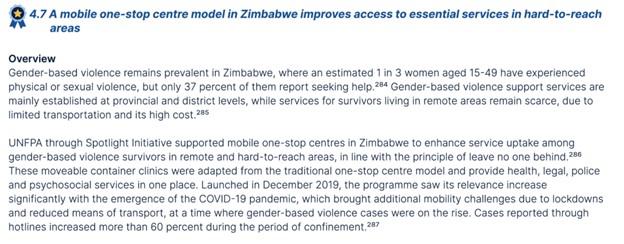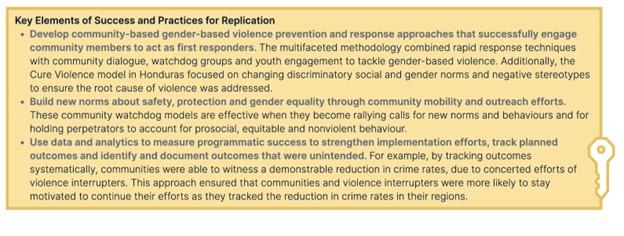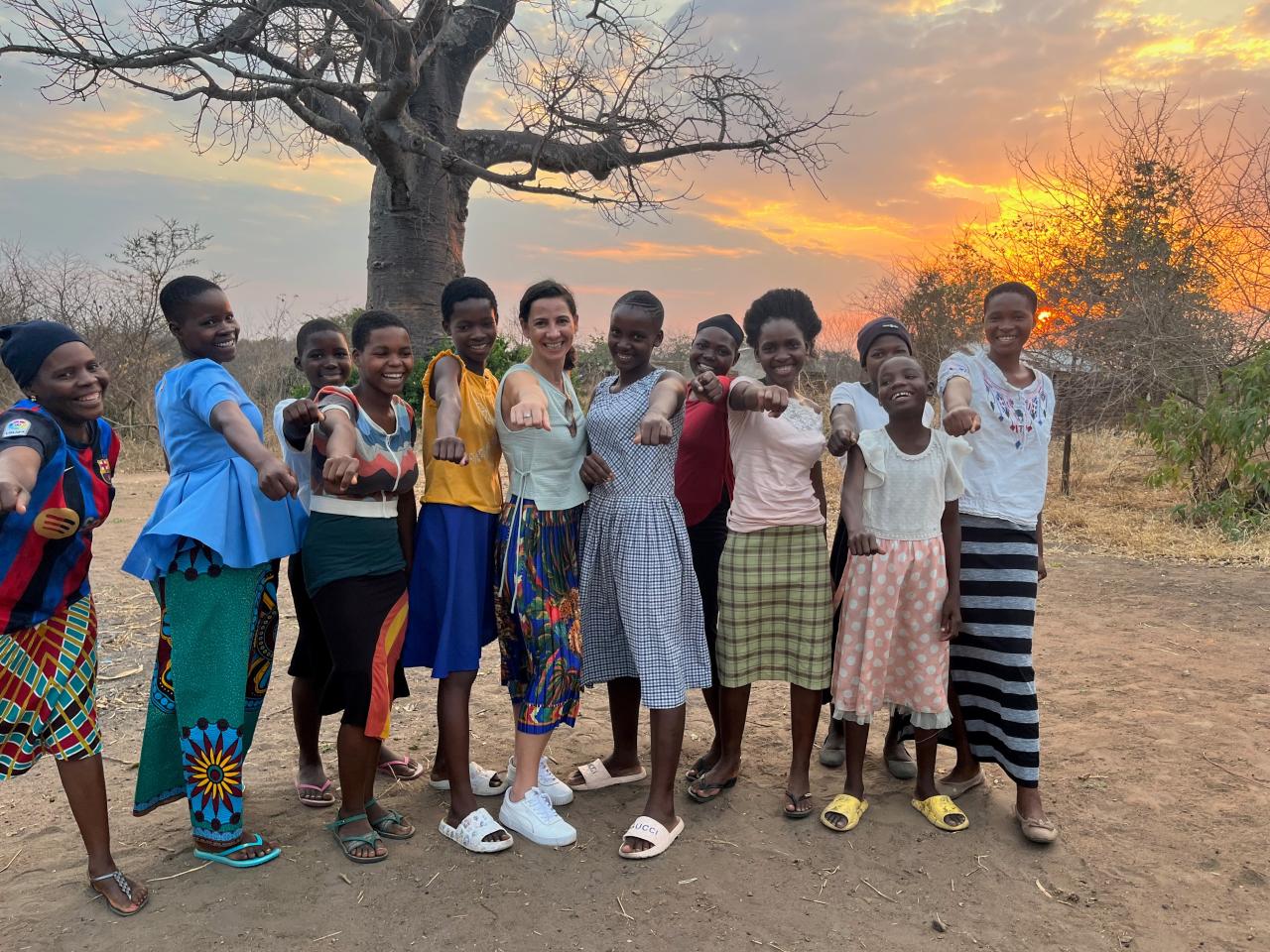Methodological reflections on creating the Compendium of Innovative and Good Practices and Lessons Learned for Spotlight Initiative

By Alexandra Pittman, PhD
Founder and CEO of ImpactMapper
We work with many donors at ImpactMapper and help them track, analyze and communicate the impact of their investments and programming. When we were commissioned by Spotlight Initiative to produce this Compendium, we were excited for many reasons.
First, Spotlight Initiative is a historic initiative, with the largest pot of funds being dedicated to ending violence against women and girls (VAWG) around the world to date. The Initiative deployed 500 million Euros over five years to 122 countries through 34 country and regional programmes. This meant there was a massive amount of data, most of it in text format, gathered from country and regional reporting that we had access to and would get to analyze – which for data geeks like us, is gold.
Second, we were able to collect original data from country and regional offices and had the opportunity to do site visits with five countries, which afforded us a behind-the-scenes look to better understand what worked and what did not, practices that could be shared and adapted, and even scaled up in the future.
Third, the mission of Spotlight Initiative and the legacy of learning that they were interested in creating inspired us. Donor agencies sharing knowledge and lessons learned from their grantmaking and implementations are too often missing in the sector. Yet it is incredibly important in a world where there are rising rates of violence against women and girls, reversals of legal progress and rising extremism. The more concrete examples we have in the sector of what is working and not, the easier this data is to find and to search examples of success by topic, region and issue. The more inspiration for others working in the field, the better.
Below we share methodological lessons learned in the process of producing this important knowledge product for Spotlight Initiative and the ending violence against women and girls (EVAWG) field.
This methodology blog is the first in a series of two that our team will produce. The second focuses on lessons from our travel and site visits to six countries.
The data
Taking the time to analyze existing annual reports from Spotlight Initiative’s country and regional offices surfaced incredible insights into strategies that were working, successes and remaining challenges that would have largely been lost if unanalyzed.
Systematic knowledge management and qualitative analysis of reports and results databases yielded incredible insights. To start the process, our team developed a detailed taxonomy focused on lessons learned, best practices, case studies around different themes, and then coded nearly 270 documents from country and regional programmes using the ImpactMapper software and interviews from five site visits to Ecuador, Kyrgyzstan, Malawi, Papua New Guinea, and Trinidad and Tobago. While time-consuming, this systematic analysis process created a knowledge repository for Spotlight Initiative and our team that allowed for the quick retrieval of excellent case studies, lessons learned, and best practices on a particular aspect of ending VAWG. With the click of a button, unseen lessons and impacts emerged, and were quickly found for diverse purposes, e.g., filtering by country, region, particular VAWG issues, quotes by different stakeholders, lessons learned, etc. When it came to producing the Compendium, this made searching for examples much more efficient and richer, since all of the original details related to programmes were easily accessible. This database and knowledge repository are also accessible to the Initiative's team to produce different knowledge products in the future as well. (See a knowledge product brief produced with this comprehensive coded database here, in addition to the full Compendium.)
Case study development
Including data on the specific landscape that Spotlight Initiative partners were operating in helped to contextualize the depth of the VAWG problem in that country or community and helped to frame the impact of the solutions and why this work is so important.
What often happens when working across cultures and countries, is that contextual realities connected to violence against women and girls, such as the nuance in how different forms of violence show up in that context and prevalence rates, can be obscured. We wanted to ensure the case studies we wrote brought the reader into each context, so we shared statistics on the specific type of violence faced in that country or region and explained the reason why Spotlight Initiative and partners prioritized the interventions it developed for that setting. See a screenshot below for an example of our context analysis from a case study on Zimbabwe’s one-stop service provision centres. This type of evidence-based framing of the problem, when coupled with detailed results, helps to also prime the reader for why these interventions matter and can even serve to underscore why more attention and funding are needed to fully address the scope of the problem.
In addition to sharing the detailed results and strategies used in each case study, we closed the cases with elements of success and practices for replication or adaptation to enhance the applicability and use of the case analysis.
We wanted this Compendium to be useful for practitioners. For that reason, we spent considerable time describing relevant information, results and analysis relevant to that unique case, but we also wanted to provide information and learnings that could be taken up by other civil society organizations, policymakers, programme designers or donors working on similar issues as well. As such, at the end of each case study, text boxes share elements of success and practices for replication that are more generalizable and could be used across different contexts. See an example of more generalized lessons derived from the case study in Honduras focused on the Cure violence community model of combating violence against women and girls.
In-country learning and experiences
Site visits deepened our analysis of programming in countries and allowed us to see the power of Spotlight Initiative’s comprehensive approach in action.
External research has shown the power of using a comprehensive model, and that it is 70-90% more effective than a single pillar strategy that many EVAWG programmes operate with [1]. The first phase of Spotlight Initiative's comprehensive approach aimed to make changes across six different areas, including 1: Laws and Policies, 2: Institutional Strengthening, 3: Prevention, 4: Quality Essential Services, Pillar 5: Data, and 6: Women's Movements. See the example below of Malawi and how a comprehensive approach and coordinated action across different programmes in the country yielded important impacts.
“In line with the comprehensive approach, the Malawi Police Service collaborated with traditional chiefs and other community structures [2] in order to track child marriage and gender-based violence cases through the Safe Schools Mentorship Programme and the One School One Police Officer Initiative. Both Spotlight Initiative interventions facilitated police investigations and prosecutions and linked the mobile courts to schools. Over 750 police officers, 13,253 members of school-based structures (i.e. PTAs and mother groups), and 601,504 students were trained on how to prevent and respond to violence against women and girls in schools. [3] As a result, 52 child marriage or violence cases were reported through school complaints boxes placed in 135 schools by adolescent girls and boys: of these, 25 were concluded, 17 resulted in convictions, 8 in acquittals and the remaining 12 are still being handled in court.”[4]
Read the full case study 7.1 on Malawi here.
Spotlight Initiative's deep commitment to partnership and supporting civil society and particularly women's rights and feminist organizations and movements stood out throughout the data analysis and country visits as a critical aspect of their programming.
The external research clearly shows the outsized impact that feminist movements and organizations have and can play in national law and policy reform efforts connected to ending violence against women and girls. The fact that Spotlight Initiative has recognized the importance of this strategy and has doubled down on it, giving explicitly 195 million USD to civil society organizations, of which 70% went to women's rights organizations, or 136 million USD, and having one of their six pillars focused on women’s movements underscores their commitment to evidence-based programming. To see some examples of how collaboration across civil society and feminist movements made a difference, see case studies 6.2 on First-ever transnational federation of Filipino domestic and care workers unions and associations and 6.5 on Developing The Esperanza Protocol for the protection of women human rights defenders in Latin America.
The product
Spotlight Initiative’s results have been transformational in a relatively short time frame, with the conviction rate for perpetrators of gender-based violence doubling across 13 countries; 548 laws and policies have been signed to end violence against women and girls, representing a 26-fold increase in gender responsive legal reform since 2019; national budgets to address gender-based violence have increased 13-fold across 14 countries; nearly 3 million women and girls have accessed gender-based violence services and 6 million men and boys have received information on positive masculinity, respectful family relationships and non-violent conflict resolution.[3]
To learn more about how different countries and regions have achieved these transformative changes, read the Spotlight Initiative’s Compendium of Innovative and Good Practices and Lessons Learned.



